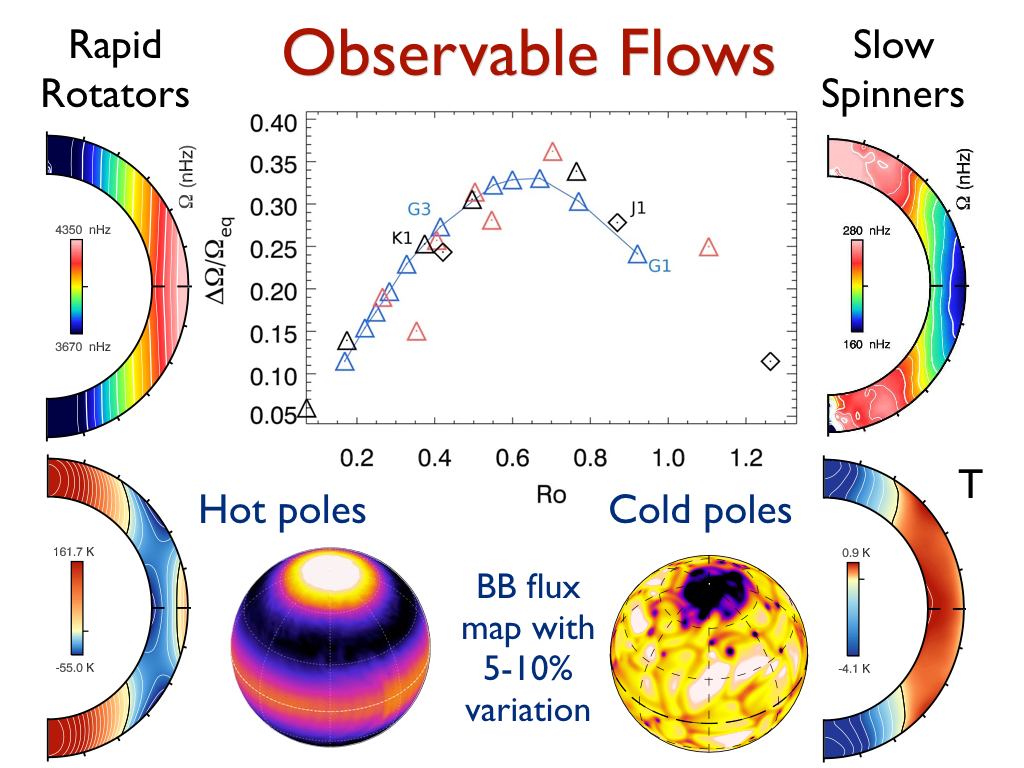Global scale flows

Transport and origins.
Global scale flows play important roles in transporting heat and chemical elements. These can arise from internal or external processes. Global scale flows are extremely important not only for their effects on the star or exoplanet, but also because they are possibly the most observable signature of internal dynamics. Observations of these flows provide sensitive constraints on stellar dynamo models, and on our understanding of the radiative coupling between exoplanets and their host stars.
Internal Processes
Internally, global-scale flows commonly arise when convection couples with rotation. The alignment of convective columns leads to large scale zonal flows, called differential rotation in the stellar context. Associated with these, but weaker, are vertical and latitudinal flows of meridional circulation. In rapidly rotating systems the differential rotation is prograde (fast) at the equator, and slow at the poles. In more rapidly rotating stars, the differential rotation becomes stronger while the meridional circulations become weaker (Brown et al 2008). In slowly rotating systems, the sense of the differential rotation flips, with slow flows at the equator and rapid flows at the poles; the meridional circulations also become faster (Featherstone & Hindman 2015). In hydrodynamic settings, the Rossby number, the ratio of convective to rotation timescales, appears to be the crucial physical parameter.
Global-scale flows play important roles in dynamo processes within stellar interiors; the process by which magnetic fields are generated from conductive plasma flows. The radial and latitudinal shear associated with differential rotation plays an important role in the generation of large-scale toroidal (longitudinal, or east-west) magnetic fields in stellar dynamos. The weaker meridional circulation may play important roles in the vertical transport of angular momentum and chemical elements, often acting over evolutionary timescales. They may or may not play a role in the magnetic dynamos as well, with many dynamo models suggesting that the meridional circulations set the timescale of magnetic reversals. Generally, the origin of the poloidal (north-south) field remains poorly understood. We seek to understand the origin, nature and transport properties of internally generated global-scale flows.
External Processes
Radiative forcing from a nearby star can be an important source of global-scale flows in planetary atmospheres. This can come from either direct energy and momentum deposition from the incident stellar flux, or from the establishment of a large-scale equator to pole temperature gradient. Large scale latitudinal temperature gradients drive a "thermal wind", resulting in a global-scale zonal circulation. This zonal flow is very likely to have vertical transport associated with it in the form of meridional circulations.